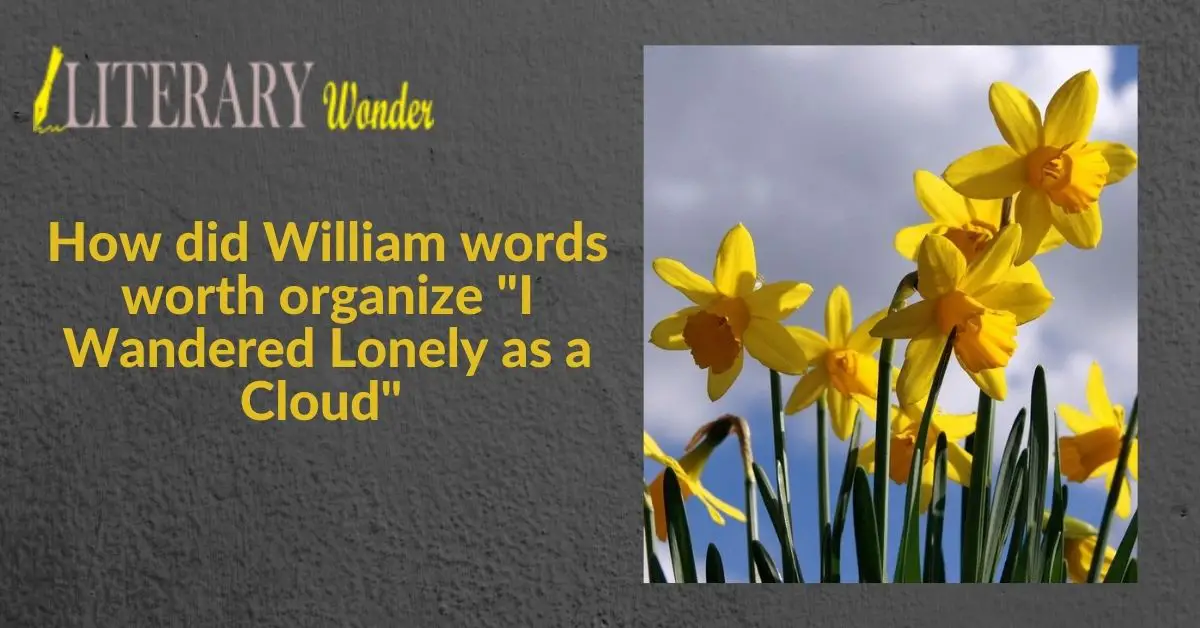“I Wandered Lonely as a Cloud” is a poem written by William Wordsworth in 1882. The poem presents the spectacular beauty of nature in three distinct parts. The first part expresses Wordsworth’s lonely life. The second part narrates how nature provides him a jocund company of daffodils, and the third part explains how beautiful events get engraved in our memories forever. The simple yet meaningful words of the poem have cast a specular effect across the globe. This article intends to magnify one of his globally read poems, “I Wandered Lonely as a cloud,” and try to find out how he has organized this poem for his readers.
“I Wandered Lonely as a Cloud”: Analysis
“I Wandered Lonely as a Cloud” begins when the speaker describes his lonely state; he wanders lonely as a cloud until he finds a joyous company of daffodils. The long bustling row of daffodils near the lake makes him forget other businesses. He explains how they magnificently flutter and move to and fro with the wind. The never-ending row of flowers reminds him of countless stars that rule the sky at night. The band of these flowers dances alongside the bay.
Although the waves are glimmering on the bay, the daffodils appear more joyous and vibrant. The speaker could not help being happy in the cheerful company of these flowers. Surprisingly, the show not only makes him freeze in the present, but it also provides him with long-lasting comfort. He says that whenever he lies on his couch in a thoughtful mood, daffodils come back to his memory and his mind starts to enjoy the gala event once again.
Meaningful Organization of the Poem
After analyzing the poem, one can easily imagine how William Wordsworth organized the poem for his readers. Right from the first line, the writer tries to explain nature and humanity’s relationship. For doing so, he comes up with two suggestions. Firstly, it elaborates that nature and society cannot be separated. Secondly, the poem suggests that the natural world shares a strong emotional bond with human happiness. Therefore, he encourages the readers to adore even the little happenings of the natural world.
Although the writer initially introduces the idea of loneliness, he does not drag the readers toward the harmful impact of loneliness. Instead, he suggests that they should understand man’s phenomenal relationship with nature. The writer also suggests that man’s bonding with nature is instinctive. The energetic dancing flowers indeed accompanied him on a specific day. Yet, he realizes the significant impact of the show later when he gets alone, and the flowers are not physically present to amuse him. In this quiet moment, his mind quickly draws on that delightful experience as an avenue to happiness.
Conclusion
Thus, the suggestive and optimistic poem urges the readers to be positive. Also, it suggests they realize the far stretched natural beauty and its significant impacts on our lives. The organization of the events in the poem shows how one can fill his quiet moments with extreme happiness. It also suggests that to avoid the harmful impact of any trouble l, one should have a stock of happy events in his memory.
Suggested Readings


